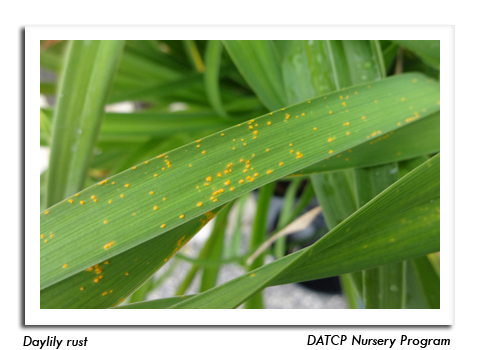
 |
|
|
Nursery & Forest
Volume 57 Number 9 Date 06/07/2012 NON-VIABLE NURSERY STOCK - Nursery plants that have not leafed out by now are considered non-viable and cannot be sold. Dry bulbs and trees and shrubs with plastic-wrapped roots are especially prone to moisture deficiency problems after distribution to retail stores and should be sold within three weeks of arrival. Non-viable stock may be set aside and observed for later growth, but otherwise must be destroyed or returned to the supplier. FOUR-LINED PLANT BUG - Adults of this insect were observed on pincushion flower in a Dane County garden center. Their damage appears on young foliage as small round, depressed spots which may be brown or black. The spots may become clear and after several weeks the affected tissue drops out leaving small holes. Both the adult and nymph stages can injure plants. DAYLILY RUST - 'Stella d'Oro' daylilies in Brown and Waukesha County nurseries are developing this rust disease. The most recognizable symptom is the long, brownish-yellow streaks which develop along the leaves. As the disease progresses, small, raised yellowish-orange pustules appear on the leaf undersides. These pustules eventually release orange spores that are wind-dispersed to other daylilies. The disease cycle involves a secondary host, Patrina spp. Daylily rust is not known to overwinter in Wisconsin. The spores arrive on southerly winds or on infected daylilies from out-of-state. --Liz Meils, DATCP Nursery Inspector 




|
|
|